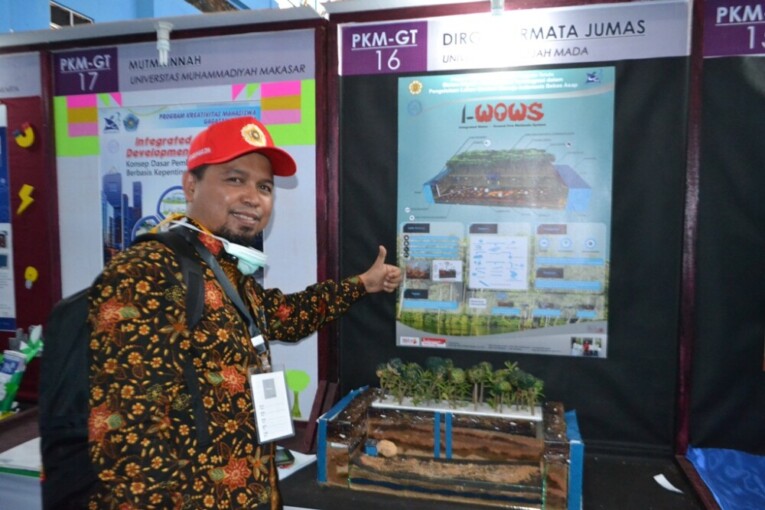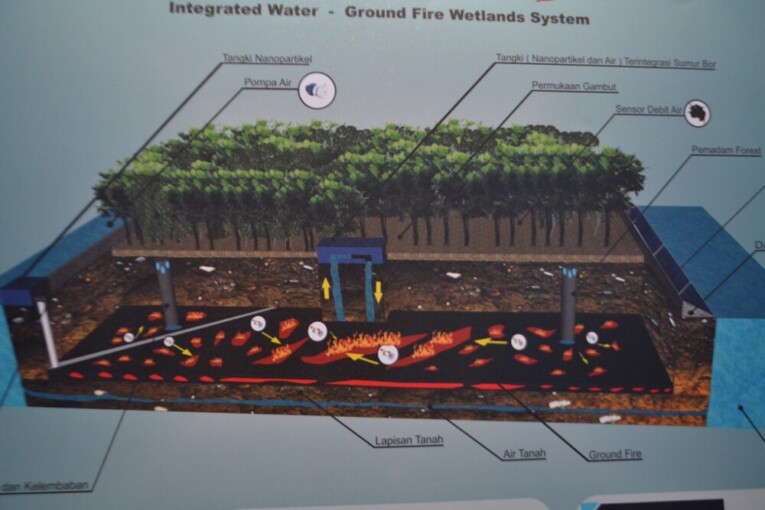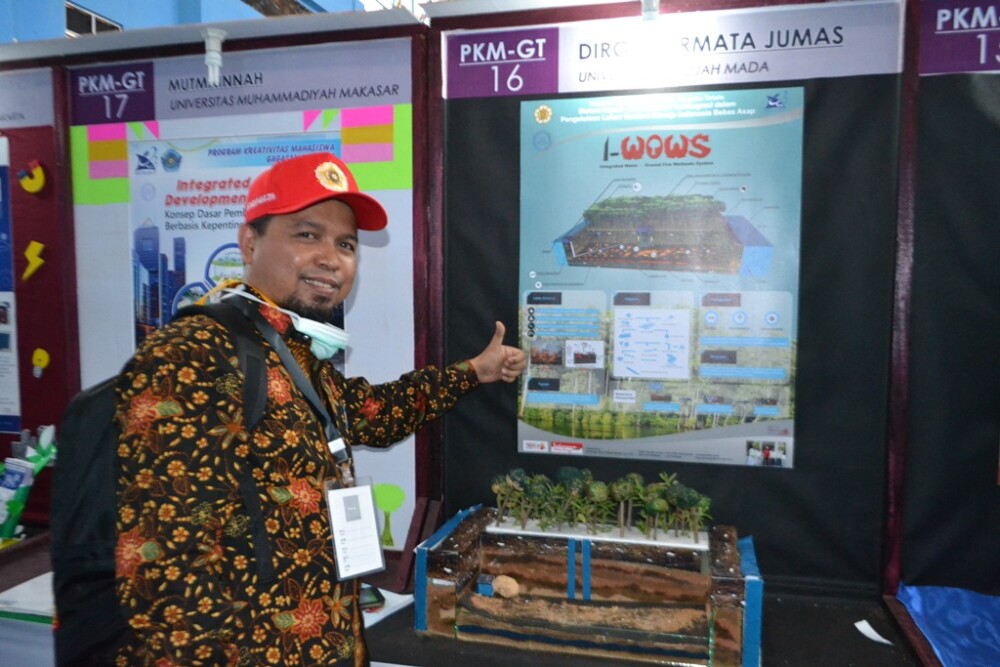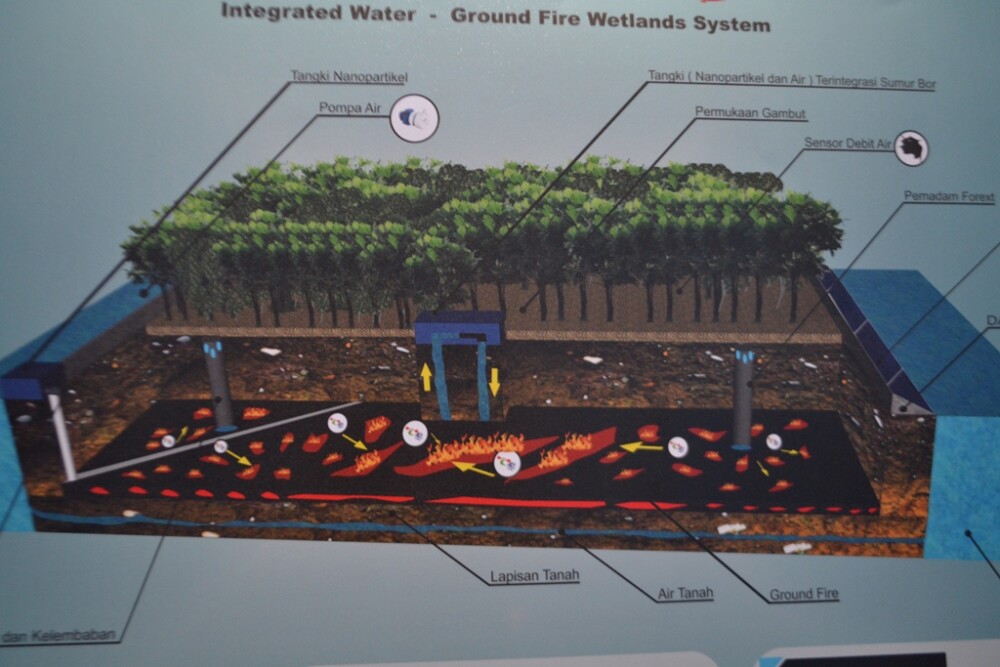KENDARI – The rampant forest fires occurring in Sumatera and Kalimantan cannot yet been fully extinguished. Many hotspots are not yet put out despite the various attempts that have been taken, including spraying by helicopters or superficial rain technology.
Concerned with the condition, four students of Universitas Gadjah Mada offered a solution to tackle the forest fires, particularly in peatlands. The students consisting of Dirga Permata Jumas, Dian Arief Risdiyanto, Aeina Desy Rachmawati, and Lita Yunitasari with supervising lecturer, Dr. Nurul Hidayat Aprilita, offered the integrated water ground fire wetland system (I-wows) technology.
Dirga Permata, team chairman, said the technology makes use of rivers existing around the area. The water is pumped up using solar panel energy. The water is then transported to a nanoparticle tank.
“The nanoparticle tank contains zeolite that is considered good in extinguishing fire rapidly,” said Dirga, presenting their work in a poster display exhibited at the 28th National Students Scientific Week (PIMNAS) in Kendari, Southeast Sulawesi, on Wednesday (7/10).
As is known, peatland fires happen due to ground fires. To know if a fire lights up under the surface, the students use a temperature and humidity sensor. “If the sensor detects heat underground, the fire extinguisher will automatically turn on to put it out,” he said.
Dirga said the nanoparticle tank is installed in two locations, riverbanks, and the peat surface. The nanoparticle tank on the peat surface is integrated with a drilling well while the water pump containing the zeolite nanoparticle is installed in the riverbank then is streamed through the pipes to the ground fire.
Lita Yunitasari, said the idea to overcome fires using the nanoparticle irrigation system stemmed from their concerns over the flammable peatlands. To make things worse, when a fire occurs, ground fire will spread massive, difficult to detect.
Their supervisor, Dr. Nurul Hidayat, said the students had chosen zeolite to be put in the nanoparticle tank. The zeolite in nanosize is installed in the tank to extinguish the fire, with the zeolite-CO2 being transported to the ground fire. The CO2 is then released from the zeolite frame to extinguish the fire. “The fire can be extinghuised while the CO2 is degraded,” she said.
The nanoparticle irrigation system that is integrated to a sensor is only one of the hundreds ideas produced by students during the event that brings together thousands of Indonesian students from various disciplines. Their ideas have yet to be tested and applied among society to help overcome the current forest fires facing the country.





